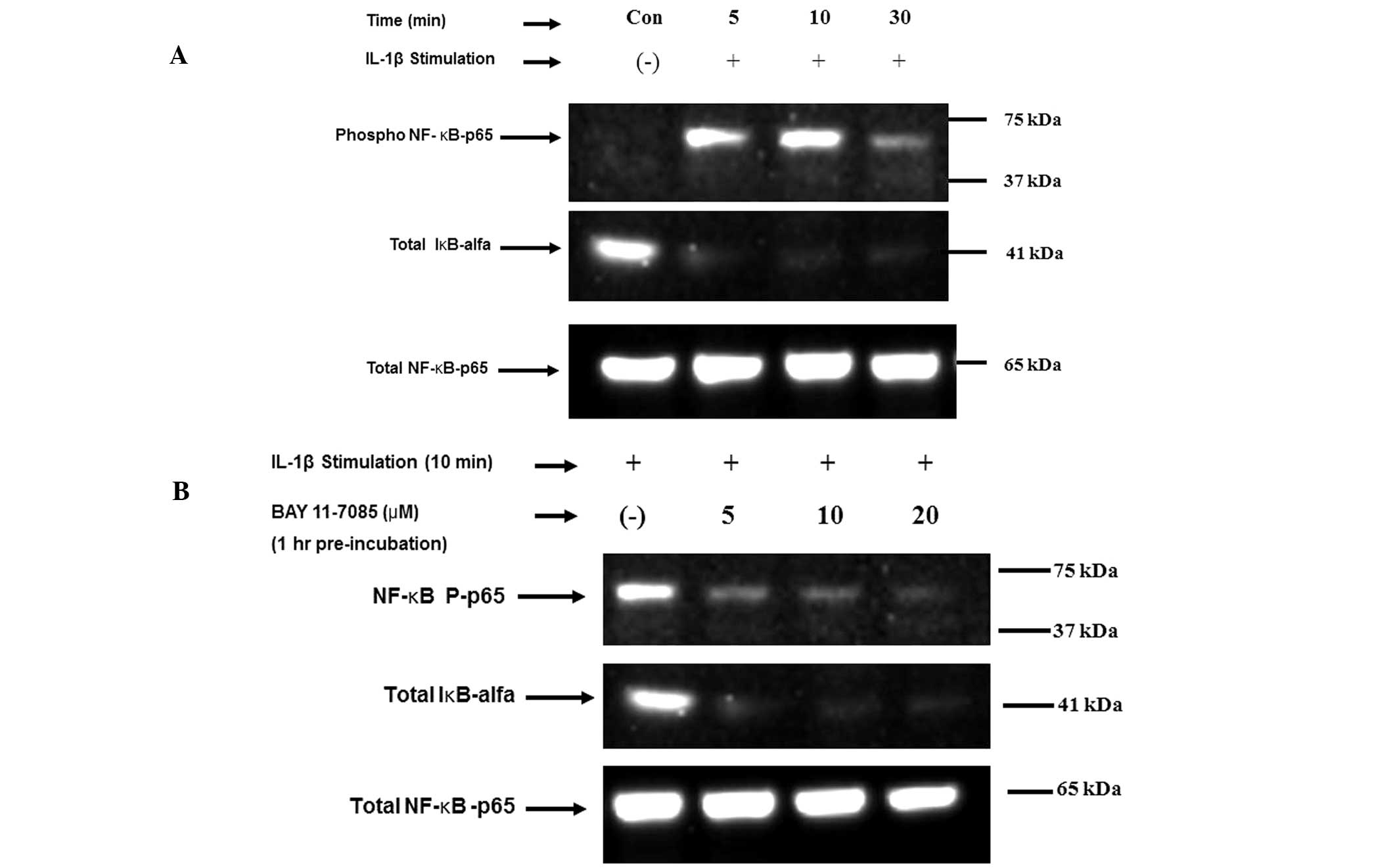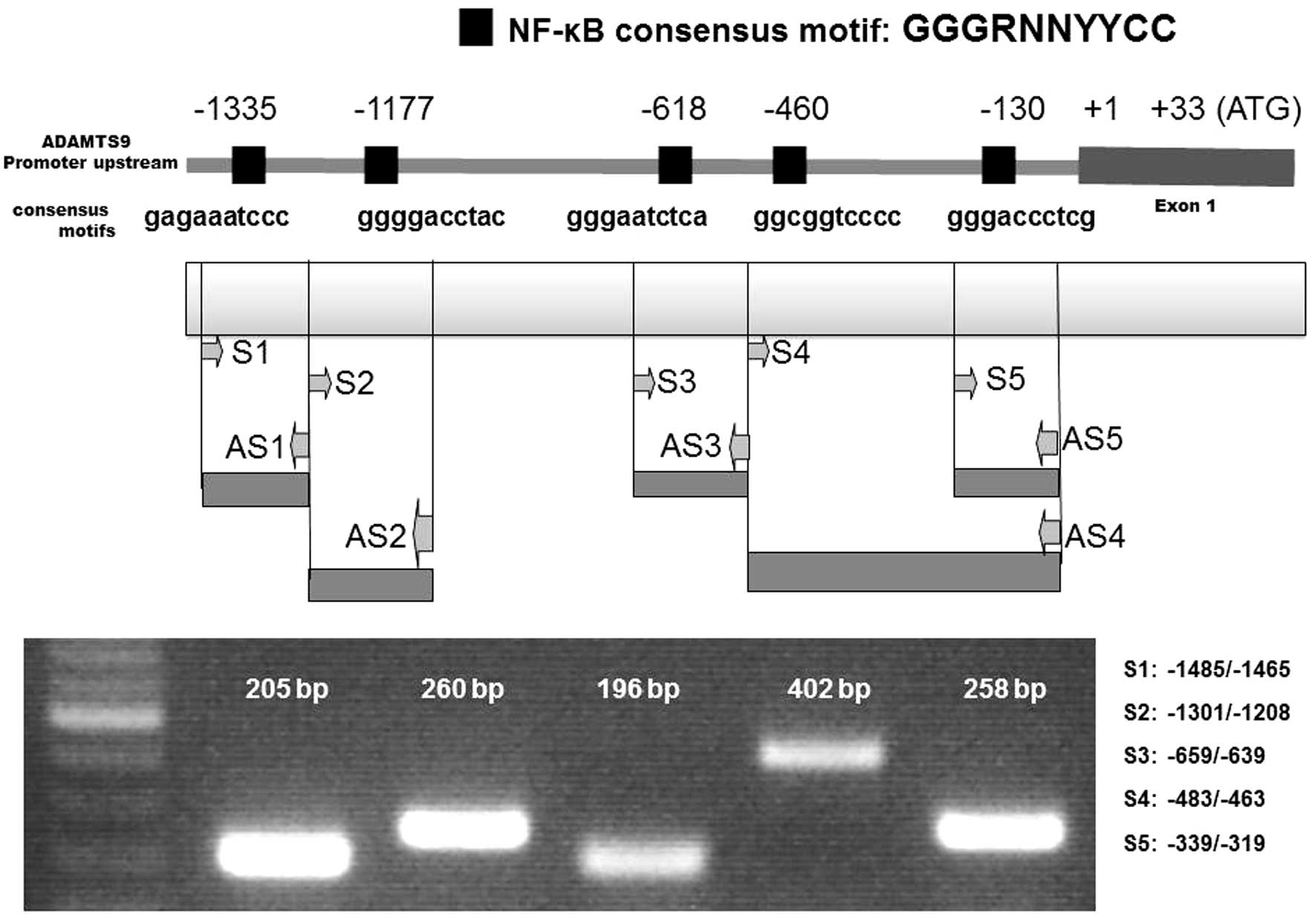Interleukin-1β induced nuclear factor-κB binds to a disintegrin-like and metalloproteinase with thrombospondin type 1 motif 9 promoter in human chondrosarcoma cells
- Authors:
- Published online on: March 6, 2015 https://doi.org/10.3892/mmr.2015.3444
- Pages: 595-600
Metrics: Total
Views: 0 (Spandidos Publications: | PMC Statistics: )
Total PDF Downloads: 0 (Spandidos Publications: | PMC Statistics: )
Abstract
Nuclear factor‑κB (NF‑κB) is involved in the regulation of inflammation‑associated genes. NF‑κB forms dimers which bind with sequences referred to as NF‑κB sites (9‑11 bp). A disintegrin‑like and metalloproteinase with thrombospondin type 1 motif 9 (ADAMTS9) is a type of proteoglycanase, which proteolytically cleaves versican and aggrecan. ADAMTS9 is a cytokine‑inducible gene that contains binding sites for NF‑κB within its promoter region. Interleukin‑1β (IL‑1β) affects cartilage metabolism and is involved in the NF‑κB pathway. It is therefore hypothesized that NF‑κB binding with ADAMTS9 promoters may activate IL‑1β, thereby promoting chondrocytic cell growth. In the present study, the OUMS‑27 chondrocytic human chondrosarcoma cell line was treated with IL‑1β with or without inhibitors of NF‑κB signaling pathways. Chromatin immunoprecipitation (ChIP) and electromobility shift assays (EMSA) were conducted order to analyze the binding of NF‑κB with the ADAMTS9 promoter region. NF‑κB‑p65 subunit phosphorylation was promoted in IL‑1β‑treated cells, which were not treated with inhibitors of NF‑κB signaling pathways. By contrast, NF‑κB‑p65 subunit phosphorylation was inhibited in cells that had been treated with BAY‑117085, an NF‑κB pathway inhibitor. ChIP and EMSA assays demonstrated that, following treatment with IL‑1β, NF‑κB‑p65 bound to elements located at ‑1177 and ‑1335 in the ADAMTS9 promoter region, in contrast to the untreated samples. The results of the present study suggested that NF‑κB may be involved in IL‑1β‑induced activation of ADAMTS9 in human chondrocytes.













